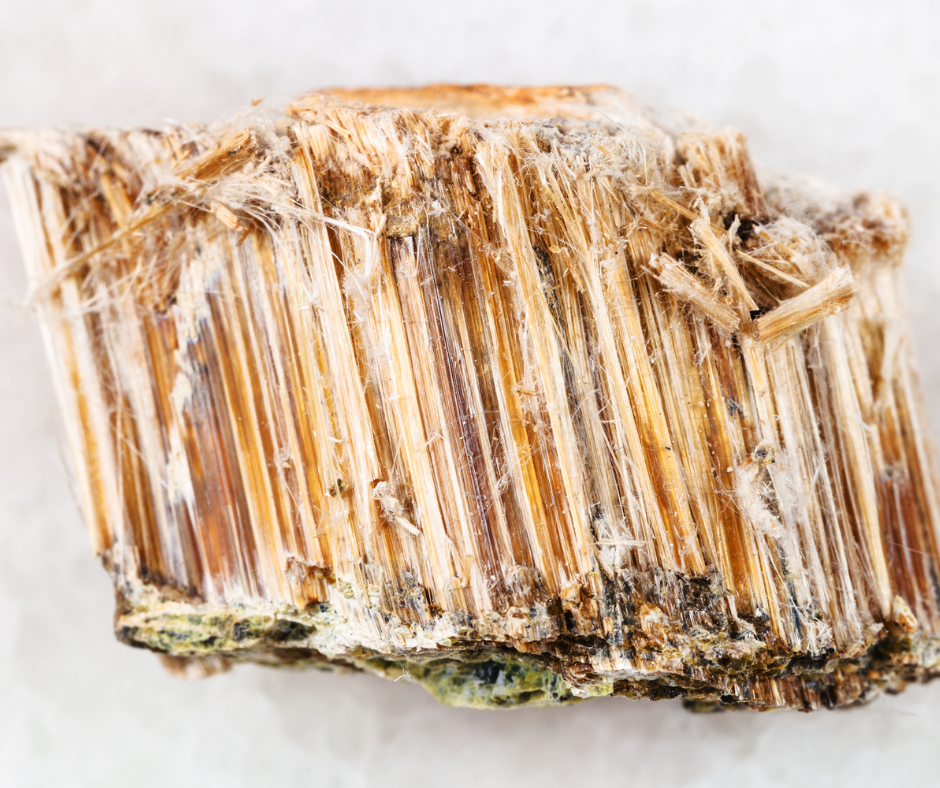What is Amosite (Brown) Asbestos? An Expert’s Guide
What Is Amosite (Brown Asbestos)? – Expert Guide to Identification, Risks, and Safety
Asbestos is a known carcinogen and presents serious health risks.

What is Amosite (Brown) Asbestos?
Amosite, also known as brown asbestos, is a member of the amphibole group of asbestos minerals. It is a dense, brittle material that was primarily used in building construction due to its fireproof properties and strength.
Physical Properties of Amosite:
- Appearance: Amosite fibres are typically brown or greyish-brown and are much more brittle than other types of asbestos.
- Usage: Amosite was mainly used in insulating materials, including thermal insulation, ceiling tiles, pipe insulation, and fireproofing materials. It was also commonly used in cement products and other industrial applications.

Health Risks of Amosite Asbestos
Amosite asbestos is considered one of the most hazardous forms of asbestos due to its needle-like fibre structure, which makes it more likely to penetrate deep into the lungs. Prolonged exposure to Amosite asbestos can result in severe respiratory conditions.
Health Conditions Caused by Amosite Asbestos Exposure:
- Asbestosis: Inhalation of Amosite fibres can lead to scarring of the lungs, causing difficulty breathing and decreased lung function.
- Lung Cancer: Amosite asbestos is a proven carcinogen and increases the risk of lung cancer in individuals who are exposed, especially those who also smoke.
- Mesothelioma: This deadly cancer, primarily affecting the pleura (lining of the lungs), is most commonly caused by exposure to Amosite asbestos.
Managing Amosite Asbestos in Your Property
If Amosite asbestos is found in your building, it must be managed carefully to prevent health risks. Asbestos should not be disturbed by untrained individuals, as even small fibres can cause serious harm.
What to Do:
- Asbestos Survey: Have a professional asbestos surveyor inspect your property and assess whether Amosite asbestos is present.
- Safe Removal: Only licensed asbestos removal contractors should perform the removal of Amosite asbestos. They are trained to handle the material safely and ensure that all precautions are taken.
- Waste Disposal: Amosite asbestos waste must be disposed of following strict regulations, and only authorised disposal sites should be used.

Where Amosite (Brown) Asbestos Can Be Found in Buildings in the UK
Amosite (brown asbestos) was commonly used in industrial settings and construction materials, particularly during the mid-20th century. While its use has been phased out over time, properties built or renovated before the 1980s may still contain this hazardous material.
Common locations for Amosite asbestos in buildings include:
- Thermal Insulation: Amosite was often used in thermal insulation materials around pipes, boilers, and in fireproofing applications.
- Ceiling Tiles: Amosite was commonly used in ceiling tiles and acoustic insulation materials.
- Wall Panels: It was used in wall cladding and partitions in commercial and industrial buildings.
- Insulating Boards: In industrial buildings, Amosite was found in insulating boards, particularly in places with high fire risk such as around furnaces and in power plants.
- Fireproofing Materials: It was used in fire-resistant materials for various parts of the building, including around steel beams for structural protection.
Given its use in high-risk industrial areas, it’s important to consult with an asbestos professional if you're concerned about the presence of Amosite in your building. Any renovation or disturbance could release harmful fibres into the air.
Conclusion
Amosite asbestos is a highly dangerous form of asbestos that poses severe health risks, including lung cancer and mesothelioma. If you think your property may contain Amosite asbestos, contact a professional to conduct an asbestos survey. Always ensure that any asbestos-containing materials are managed and removed by licensed experts to protect your health and the health of those around you.







